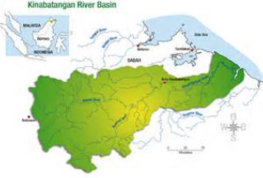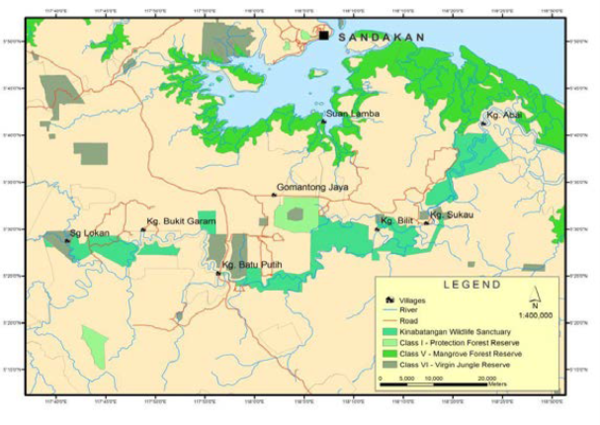Where is TRAILS project based?
The natural forests characteristic of the floodplain include mixed dry lowland dipterocarp, limestone, heath, semi-inundated, freshwater swamp, peat swamp, and mangrove forests. This diversity and the relative low traditional hunting pressure have maintained healthy wildlife populations for a long time.
Remaining forests are highly disturbed
However, since the 70s, timber exploitation and forest conversion to agriculture have resulted in the drastic collapse of most animal populations in the area. Over the past decades, the Kinabatangan floodplain has been subjected to large-scale landscape changes that have seriously impaired its ecological integrity. Today, the remaining forests are highly disturbed, degraded, and fragmented.
Abundance of wildlife
Yet, Kinabatangan remains a “Biodiversity Hotspot”, harboring a remarkable diversity and abundance of wildlife, including iconic species such as the orangutans, proboscis monkey, Bornean gibbon, Bornean elephant, clouded leopard, sun bear, as well as a wide array of birdlife.
About 45,000 ha of protected forests remain in the floodplain. These are located along the Kinabatangan River and comprise of the 26,000 ha Lower Kinabatangan Wildlife Sanctuary (LKWS) created in 2005 as well as several Virgin Jungle Forest Reserves. Adjoining these fully protected forests is approximately 8,000 ha of non-protected forests remaining on private land.
A severely fragmented corridor
Collectively these remnant forests form a severely fragmented corridor, which is one of the only remaining lowland forest corridors connecting the coast to the hinterland of Sabah, and one of only few corridors remaining in Borneo and the Sunda Shelf.
These forests serve also a key strategic function: they are the last link between the mangroves facing the South China Sea and the vast block of forests located in the central part of Sabah, and the last corridor allowing for large-scale wildlife movements in the lowlands of the State.



